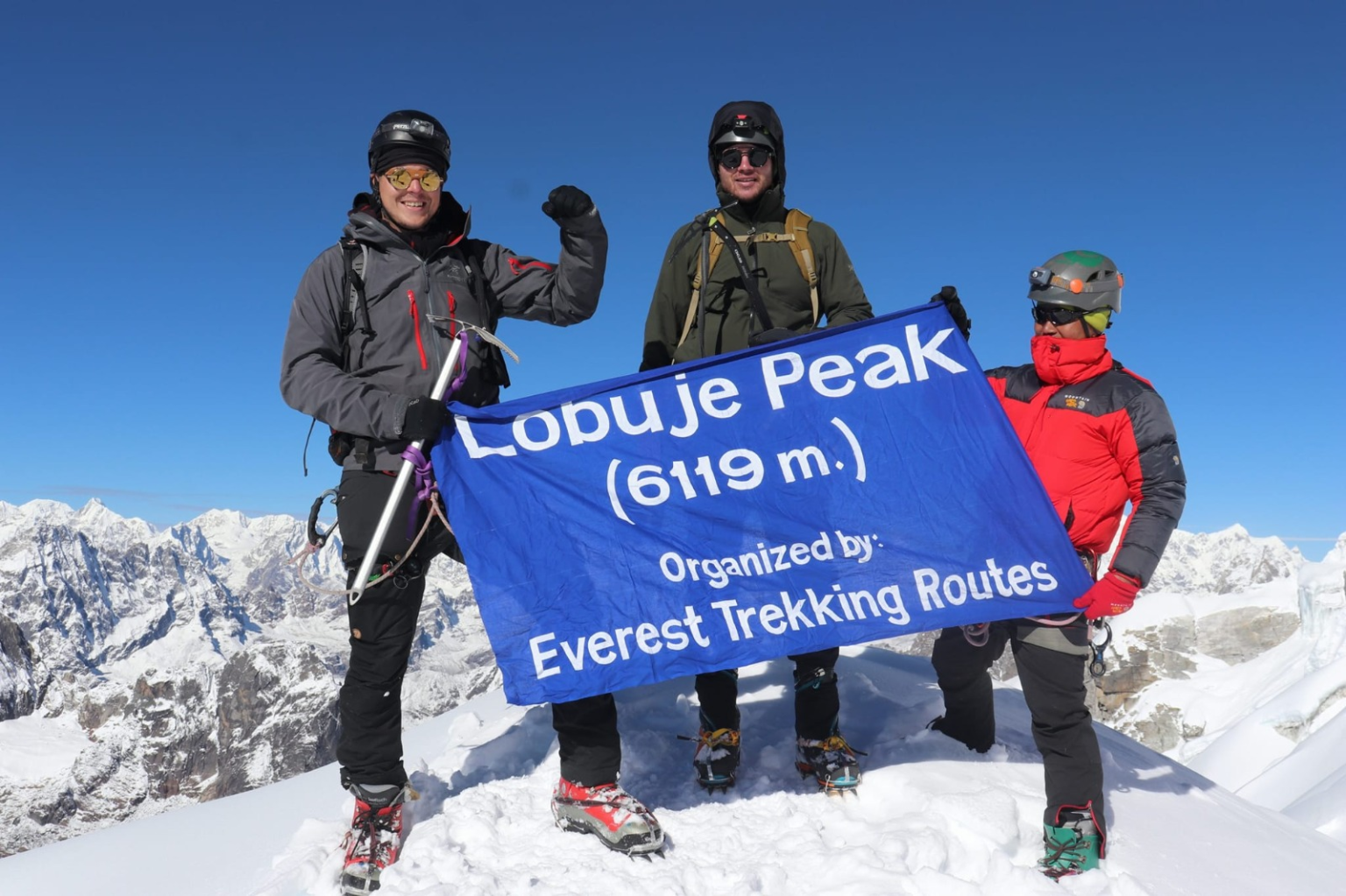Nepal’s towering Himalayas offer some of the most thrilling adventures for trekkers and climbers. Among the many impressive summits, three stand out for adventure-seekers looking for a mix of altitude, scenery, and challenge without stepping into extreme expedition territory: Lobuche Peak, Mera Peak, and Island Peak. These are officially classified as “trekking peaks” by the Nepal Mountaineering Association (NMA), but they are far from simple hikes. Each offers a unique blend of physical endurance, technical climbing, and natural grandeur.
Let’s explore these three Himalayan icons and understand what sets them apart — and which might be the right choice for your next alpine objective.
Mera Peak: The Highest Trekking Peak in Nepal (6,476m)
Overview:
Mera Peak is often the first choice for climbers aiming to break the 6,000-meter barrier. Located in the remote Hinku Valley, this peak offers one of the best viewpoints in the Himalayas, with sights of five 8,000-meter giants — Everest, Lhotse, Makalu, Kanchenjunga, and Cho Oyu — visible on a clear day.
Key Features:
- Altitude: 6,476 meters (21,247 ft)
- Technical Difficulty: Low
- Best For: Beginners in high-altitude climbing
- Route: Lukla – Paiya – Panggom – Khare – High Camp – Summit
Why Climb Mera Peak?
Mera’s appeal lies in its relatively gentle slopes and lack of highly technical sections. Though the climb requires glacier travel, ice axe use, and rope skills, it’s considered one of the more accessible high-altitude experiences. The physical demands, however, are considerable due to the extended approach and high elevation.
Ideal Season:
- Spring (March–May)
- Autumn (September–November)
Permits Needed:
- Mera Peak Climbing Permit
- Makalu Barun National Park Permit
- Local (Rural Municipality) Permit
Island Peak (Imja Tse): A True Climber’s Training Ground (6,189m)
Overview:
Island Peak gets its name from its appearance: a striking triangle of ice rising from the surrounding glaciers like an island in a sea of snow. It’s located in the Everest region near Chhukung and is one of the most popular trekking peaks in Nepal due to its proximity to Everest Base Camp and its moderately technical climb.
Key Features:
- Altitude: 6,189 meters (20,305 ft)
- Technical Difficulty: Moderate
- Best For: Adventurous climbers seeking hands-on mountaineering experience
- Route: Lukla – Namche – Tengboche – Dingboche – Chhukung – Base Camp – Summit
Why Climb Island Peak?
Island Peak offers a more challenging experience than Mera, involving fixed ropes, ladder crossings over crevasses, and a steep final ice wall. It is a common preparatory climb for those aiming to summit 8,000-meter peaks later in their mountaineering careers.
Ideal Season:
- Spring and Autumn, similar to Mera Peak
Permits Needed:
- Island Peak Climbing Permit
- Sagarmatha National Park Entry Permit
- Khumbu Pasang Lhamu Rural Municipality Permit
Lobuche Peak: A Front Row Seat to Everest (6,119m)
Overview:
Located close to Everest Base Camp, Lobuche Peak offers exceptional views of Mount Everest, Lhotse, and Nuptse. There are two summits: Lobuche East (classified as a trekking peak) and Lobuche West (a technical expedition peak). Most commercial climbs are to Lobuche East.
Key Features:
- Altitude: 6,119 meters (20,075 ft)
- Technical Difficulty: Moderate
- Best For: Climbers combining mountaineering with the Everest Base Camp trek
- Route: Lukla – Namche – Lobuche – High Camp – Summit
Why Climb Lobuche Peak?
Lobuche is slightly more technical than Island Peak due to its mixed terrain — a blend of rock, snow, and ice. The ridge to the summit is exposed and dramatic, requiring secure rope techniques. However, the main allure is its incredible location. Many climbers combine it with an Everest Base Camp trek, making for a spectacular dual adventure.
Ideal Season:
- Spring (April–May)
- Autumn (October–November)
Permits Needed:
- Lobuche Peak Climbing Permit
- Sagarmatha National Park Permit
- Local Municipality Fee
Which Peak Should You Choose?
- Choose Mera Peak if you’re new to high-altitude climbing and want a less crowded, scenic experience. It’s also the highest trekking peak in Nepal.
- Choose Island Peak if you want to build your technical climbing skills and don’t mind the challenge of ice walls and rope work.
- Choose Lobuche Peak if you’re combining it with the Everest Base Camp trek or want jaw-dropping views of Everest itself.
Each peak offers a different kind of reward: Mera for panoramic beauty and altitude, Island for hands-on climbing experience, and Lobuche for its dramatic approach and Everest backdrop.
Preparation Tips for All Three Peaks
- Fitness Matters: Cardiovascular training, strength workouts, and altitude acclimatization hikes are crucial. You should be comfortable walking 6–8 hours daily for several days.
- Technical Training: For Island and Lobuche Peaks, basic climbing skills like using a jumar, abseiling, and walking with crampons on ice are essential.
- Gear: Bring high-quality boots, ice axe, crampons, harness, helmet, and down clothing. Rent gear locally if needed, but test it beforehand.
- Altitude Awareness: Acclimatization is key. Always include extra days in your itinerary for rest and slow ascent.
Final Thoughts
Climbing Lobuche Peak, Mera Peak, and Island Peak offers more than summits — these experiences are journeys into remote cultures, breathtaking scenery, and personal achievement. Whether you’re stepping onto a glacier for the first time or sharpening your alpine skills for bigger objectives, these peaks are ideal stepping stones toward becoming a true mountaineer.
Contact Details
———————
Company address: Everest Trekking Routes Pvt. Ltd.
16 Khumbu, Nayabazaar, Kathmandu, Nepal
Mobile : +977-9843467921 (Rabin)
Email: [email protected]
URL:- www.everesttrekkingroutes.com


